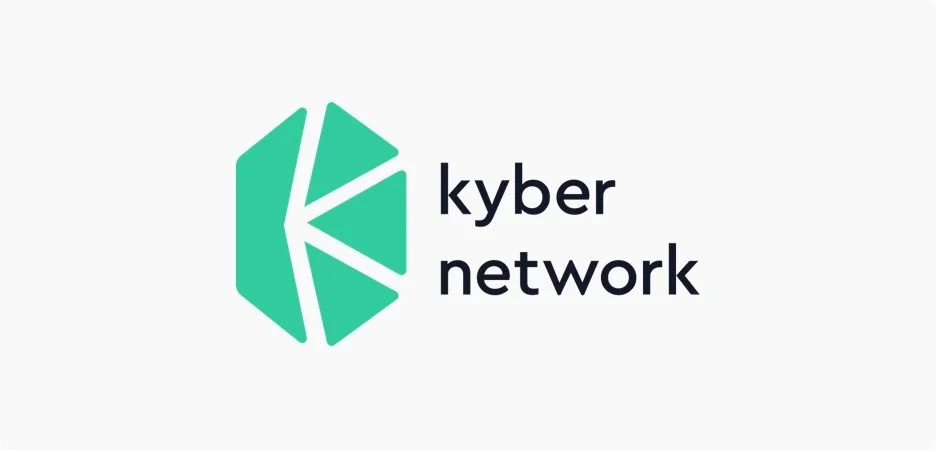What Is Yield Farming? DeFi Basics Explained
If you ask What is Yield Farming most traders will believe that you have been living under a rock for the past year. Yield farming is the main life force of DeFi that drove it to new and incredible highs in 2020. It is an essential feature that everyone should know about, and because of that, we wrote a beginner’s guide that explains the basics of yield farming.
Not an avid reader? That’s fine. You can also learn how yield farming works in video format!
Decentralized finance, or DeFi, has recently received tons of attention from investors both large and small. Last week, Mark Cuban, the famous billionaire-owner of the Dallas Mavericks, tweeted his support for DeFi and cited yield farming as an alternative to traditional finance.
With so much buzz around DeFi, and yield farming being touted as the future of finance, you may be eager to find out what yield farming is in the first place.
This guide to yield farming will teach you the basics of earning generous yields on your cryptocurrency assets like Bitcoin, Ethereum, stablecoins, and more.
While learning how to yield farm using this tutorial, you should keep our DeFi Glossary open in another tab in case you run into unfamiliar terms and phrases.
What is yield farming?
Simply put, yield farming is a way to use your crypto to earn more crypto. Sometimes referred to as liquidity mining, yield farmers use their crypto assets to earn rewards.
Usually, people think that the key to holding crypto as an investment is just to leave it in cold storage. Yield farming has changed that way of thinking.
Because of DeFi, it's now clear that your cryptocurrency should be put to work to generate more value. That's the essence of yield farming.
How can you create more crypto with the digital assets you already have on hand? By lending them out! However, that's where several DeFi platforms and protocols come in.
DeFi platforms like Compound, Curve Finance, Aave, and Badger DAO work by letting users deposit cryptocurrency, lending them out to borrowers with interest via smart contracts, then paying yields derived from the interest back to lenders.
When you deposit to a DeFi protocol's liquidity pool as a lender, you'll typically earn more of the token you deposited and a reward token (usually the native asset of the platform you're using). So, if you lend on Compound, you'll earn COMP, or if you deposit to a SushiSwap pool, you'll earn SUSHI — you get the idea.
If you're already familiar with the concept of staking and earning staking rewards, then you'll be happy to know that yield farming is more or less the same thing. The only substantial difference here is that yield farmers are all tied to providing and borrowing liquidity.
Where things get really interesting is when you realize you can deploy complicated yield farming strategies to maximize your returns. This usually involves depositing, borrowing, and farming your assets out across several DeFi pools, but we'll get into this subject at a later stage.
How yield farming works
To explain how yield farming works, it's helpful to use Uniswap, a DeFi exchange protocol, as an example.
While commonly referred to as a decentralized exchange, Uniswap is really an automated market maker (AMM). An AMM is just a fancy way of describing an exchange that crowdsources its liquidity.
Now, why would anyone want to provide liquidity to Uniswap? The answer is quite simple — to earn incentives, of course! Uniswap incentivizes liquidity providers to deposit into its pools by paying rewards from transactions using those pools.
So, whereas a centralized exchange like Coinbase makes money by keeping exchange fees for itself as profit, Uniswap and other DeFi protocols pay those fees out to users as rewards.
Now that you understand how this works for a decentralized exchange like Uniswap, you also get how yield farming works in general across other DeFi protocols. Let's put this new knowledge to use by thinking about yield farming using Compound Finance.
Compound is not an exchange like Uniswap is. Instead, it's a decentralized lending platform for borrowing cryptocurrency assets using crypto as collateral.
What Compound and Uniswap have in common is this: both rely on liquidity pools as a source of funds for their respective protocols. Uniswap needs liquidity providers to deposit the assets being exchanged by users, and Compound needs liquidity providers to deposit assets being borrowed by users.
Uniswap incentivizes liquidity providers by sharing transaction fees between LP's, while Compound incentivizes liquidity providers by paying lenders a floating annual percentage yield rate (APY).
However, here is where they differ: lenders and borrowers both earn COMP tokens when using Compound. As a Compound lender, you're earning both APY and farming COMP tokens for doing nothing but supplying the protocol with your cryptocurrency assets.
There are tons of DeFi protocols out there now, and many of them (if not most) offer some form of yield farming rewards. Moreover, many of these protocols work on top of each other, a quality known in DeFi as composability. Taking advantage of composability between protocols helps you stack and multiply your yields using inventive yield farming strategies.
How to start yield farming
Let's recap the two key points yield farming so far:
Yield farming = putting your crypto to work to earn interest and rewards
Yield farmers = anyone providing liquidity to interest/reward-generating liquidity pools
To become a yield farmer, all you need to do is deposit interest or reward-generating cryptocurrency assets to a DeFi protocol. Sounds easy, right? It is if you know what you're doing.
Before all else, you need to get some cryptocurrency in the first place — but not just any kind. Some cryptocurrencies are more widely accepted than others, and not all assets generate the same high yields as others.
To make things simple, here is a step-by-step guide to start yield farming on the right foot.
Buy BTC, ETH, USDT, USDC, or DAI. These are the most universally accepted cryptocurrencies for generating yield on most DeFi protocols. Note that you'll need to buy some ETH no matter what to use as gas, which we'll explain later.
Download the MetaMask Wallet browser extension. After installing, create a wallet and securely backup your keys and seed phrase.
MetaMask wallets hold ERC-20 tokens — tokens issued on the Ethereum blockchain. As it so happens, most DeFi platforms are built on Ethereum too. So, you should have no problem sending the currencies from step one to your MetaMask, with the exception of Bitcoin. If you want to use Bitcoin on the Ethereum blockchain and hold it in your MetaMask, you'll need to wrap it first using the Ren Bridge to create wBTC, or buy wBTC on an exchange.
Once your ERC-20 tokens are safely inside your MetaMask wallet, you're ready to start interacting with DeFi platforms and begin the never-ending fun of yield farming.
For simplicity's sake, we recommend learning yield farming using Compound Finance. Compound started the yield farming craze and is, in many ways, the most beginner-friendly DeFi platform. Head over to Compound, then click the App button in the upper right-hand corner.
After clicking App, you'll be asked to connect your wallet. Click the MetaMask option, then sign in to your MetaMask.
Select the asset you want to supply from the Supply side of the landing page. Choose the amount you want to provide, then click supply. Note that there are two APY figures shown — supply APY and distribution APY. The former is paid in-kind (same as the deposited asset), the latter is paid in COMP. This means you're earning two forms of APY for one deposit.
MetaMask will pop asking you to confirm two transactions. The first is to interact with the Compound smart contract, the second is to confirm the transaction. Both will cost gas paid in ETH, which is why we noted in step one to keep ETH in your wallet regardless of your chosen supply asset.
After the transactions confirm, the Compound app will notify you that all is well, and you'll see your balance column populate with the amount you supplied. To the left of balance is the APY / Earned column, which displays both your APY rate, and how much you've earned.
At the top of the Compound page is a Net APY gauge to help you keep track of your total APY earned between both supply APY and distribution APY rates.
To increase your yield farm potential, you can now borrow against your supplied assets to earn even more distribution APY (paid in COMP) while lending those assets back to Compound or another platform DeFi platform like Aave, Yearn Finance, or Curve Finance.
If you're new to DeFi and want to learn about yield farming, Compound is a safe beginner-friendly option. After getting the hang of things using the Compound app, you can start branching out to other DeFi protocols.
Yield farming DeFi platforms ranked by difficulty
There are so many DeFi platforms with options for yield farmers these days that it can be tough to choose. What's more, not all DeFi platforms are created equal in terms of difficulty of use.
Below, we've created a cheat sheet to understand the level of difficulty involved in using the different major DeFi platforms.
Easy mode
Compound Finance
Maker DAO
Aave
Intermediate
Uniswap
SushiSwap
Synthetix
Curve Finance
Yearn Finance
Badger DAO
Cream Finance
Harvest Finance
Balancer
Expert mode
Alpha Homora
Mirror Protocol
Metastable
Loopring
dYdX
DeFi yield farming tools and resources
Once you start yield farming, there's no going back. You'll find that as you farm more and more tokens you will need better tools to track and organize them.
As the DeFi industry grows and yield farming becomes more commonplace, so too are awesome tools for portfolio management and discovering new yield farms. Moreover, fewer people will wonder what is yield farming.
Here are a few tools well worth using to simplify the yield farmer life.
DeFi Pulse is like CoinMarketCap for DeFi. All of the relevant market cap, TVL, and ranking data you could ever want or need is easily found at DeFi Pulse.
Zapper is a nifty DeFi dashboard that keeps all of your investments, farms, and yield earnings organized in one place. You can also use Zapper to find up-to-date yield APY info across platforms.
Instadapp is a DeFi manager that helps you manage liquidity across protocols like Uniswap and Aave. Smart Account feature helps you optimize your yields automatically.
Debank is a one-stop DeFi powerhouse featuring a portfolio manager, token swap, DeFi Market, DeFi list of projects, and a ranking page displaying DeFi TVL.
Zerion helps you invest in DeFi projects and yield farm from the simplicity of a single place. The Zerion app also tracks your DeFi portfolio on the go.
Shrimpy is a social trading platform that enables you to create trading strategies around your DeFi assets. Multiply your earnings by automating crypto trades.
With these tools, the cheatsheet, and our simple guide to yield farming, you should be good to go. Now, get out there and harvest the juicy yields DeFi has to offer!
Shrimpy is an account aggregating platform for cryptocurrency. It is designed for both professional and novice traders to come and learn about the growing crypto industry. Trade with ease, track your performance, and analyze the market. Shrimpy is the trusted platform for trading over $13B in digital assets.
Follow us on Twitter for updates!














